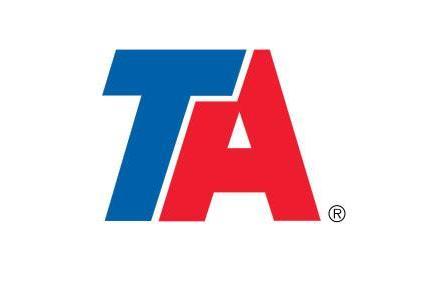Challenges Faced by a Textile Company

In today's competitive world, textile companies face numerous challenges that can impact their growth, profitability, and sustainability. These issues range from labor and supply chain concerns to environmental regulations and digital transformation. In this article, we will explore some of the common problems faced by these companies and how they can be addressed.
Labor Issues
One of the most significant challenges for textile companies is labor. Many factories in developing countries rely on low-cost labor, but this often leads to poor working conditions, low wages, and low levels of job satisfaction. For example, according to a 2019 report by the International Labour Organization (ILO), over half of all garment workers in Bangladesh are paid less than the minimum wage set by international standards, which is often below US $3 per hour. This underpayment not only affects the workers' health and safety but also harms the reputation of the company and its products.
To address these labor issues, textile companies can invest in modernizing and upgrading their supply chains to ensure fair labor practices. This may involve using more transparent sourcing methods, implementing stricter labor laws, or engaging with local communities to establish partnerships that prioritize ethical and sustainable production practices. By doing so, companies can demonstrate their values to consumers and gain their trust while minimizing the risks associated with labor-related issues.
Supply Chain Risks
Another challenge facing textile companies is the risk associated with their supply chains. The global pandemic has highlighted the vulnerabilities in these networks, making it difficult for companies to maintain control over materials and logistics. For example, during the COVID-19 outbreak, many factories in China were forced to shut down due to lockdown measures, causing shortages in raw materials such as cotton and polyester. As a result, many textile companies had to quickly find alternative suppliers or renegotiate contracts with existing ones to mitigate the impact of these disruptions.
To manage these risks, textile companies can develop more robust supply chain management systems that incorporate technologies such as blockchain and AI. These systems can help companies monitor their supply chain more closely, detect anomalies early on, and respond effectively to any disruptions. Additionally, companies can invest in diversified sourcing strategies to minimize dependence on any single supplier or location. By doing so, they can better protect themselves against external shocks and reduce the risk of supply chain breakdowns.
Environmental Regulations
As awareness of environmental issues grows, textile companies are being increasingly regulated by governments around the world. These regulations can include limits on water usage, emissions, and packaging materials. For example, in 2019, the European Union passed a series of directives aimed at reducing plastic waste in clothing and textiles. These regulations require textile companies to reduce their use of single-use plastics, improve product design to reduce waste, and adopt sustainable packaging solutions.
To comply with these regulations, textile companies must invest in research and development to create more durable, eco-friendly materials and processes. Additionally, they can collaborate with suppliers and partners to implement similar sustainable practices. By doing so, they can demonstrate their commitment to environmental responsibility and build trust with customers who value sustainability.
Digital Transformation
The digital age has brought about new opportunities and challenges for textile companies. On the one hand, e-commerce platforms have made it easier for consumers to purchase textile products from anywhere in the world. On the other hand, digital transformation requires companies to invest in advanced technology and data analytics tools to stay ahead of the competition. However, many textile companies still struggle with this transition due to outdated infrastructure, limited resources, and a lack of digital skills among employees.
To successfully navigate this transition, textile companies need to adopt a holistic approach that includes investing in digital infrastructure, training employees in data analytics and digital marketing, and partnering with tech companies to leverage their expertise. By doing so, companies can gain insights into consumer behavior, optimize their supply chain management, and enhance their brand presence online. This will help them stay competitive in a rapidly changing market landscape and meet the demands of modern consumers.
Competitive Landscape
The global textile industry is highly competitive, with many players vying for market share and customer attention. As a result, companies must constantly innovate and differentiate themselves from their competitors. However, this can be challenging if there is a lack of focus or investment in certain areas. For example, some textile companies may invest heavily in research and development to create new products or processes, while others may neglect this aspect of their business.

To remain competitive, textile companies should prioritize innovation and differentiation. This can involve launching new products that meet unique needs or improving existing products through design and functionality. Additionally, companies can leverage collaborations with universities, research institutions, and other industry players to access cutting-edge technologies and ideas. By doing so, they can stay ahead of the curve and capture new markets while maintaining a strong foothold in established ones.
Customer Satisfaction
Customer satisfaction is a key factor in the success of textile companies. However, achieving high levels of customer satisfaction can be challenging due to factors such as quality concerns, pricing pressures, or shipping delays. For example, some customers may receive defective items or receive delayed shipments due to unforeseen circumstances such as natural disasters or logistical disruptions. These issues can lead to negative reviews on review platforms, damage a brand's reputation, and ultimately impact sales.
To improve customer satisfaction, textile companies need to prioritize customer service and address any concerns promptly. This can involve implementing robust quality control measures, offering flexible pricing options, or providing expedited shipping services when necessary. Additionally, companies can engage with customers through various channels such as social media, email marketing, or loyalty programs to build relationships and foster trust. By doing so, they can ensure that customers feel valued and appreciated and encourage repeat business.
Market Strategies
Successful market strategies are critical for textile companies to remain competitive in today's fast-paced marketplace. However, developing effective marketing campaigns can be challenging due to factors such as limited budgets, limited reach, or lack of understanding of target audience preferences. For example, some textile companies may invest heavily in advertising campaigns targeting specific demographics but fail to reach broader audiences or achieve desired results.
To succeed in marketing, textile companies need to conduct thorough research to understand their target audience's preferences and behaviors. This can involve analyzing social media trends, monitoring customer feedback, or partnering with market research firms to gather insights into their target markets. Additionally, companies can leverage various marketing channels such as social media, email marketing, or influencer marketing to reach a wider audience while ensuring that messages resonate with their target audience. By doing so, they can increase brand awareness and drive sales while building long-term customer relationships.
In conclusion, textile companies face several challenges that can impact their growth, profitability, and sustainability. By addressing these issues through innovative solutions, such as adopting more responsible sourcing practices, implementing supply chain risk mitigation strategies, investing in environmental regulations, embracing digital transformation, focusing on competitive innovation, prioritizing customer satisfaction, and developing effective market strategies, these companies can overcome these challenges and thrive in the future.
随着纺织行业的快速发展,越来越多的纺织品公司涌现出来,在市场竞争日益激烈的今天,这些公司也面临着诸多问题和挑战,本文将探讨纺织品公司存在的问题,并以案例说明加以补充说明。
纺织品公司存在的问题
供应链管理问题
(1)原材料采购不稳定:部分纺织品公司面临原材料供应不稳定的问题,导致生产计划难以按时完成。 (2)物流效率低下:由于运输成本高、运输时间不确定等因素,导致纺织品公司的物流效率低下。
生产效率与质量问题
(1)设备老旧:部分纺织品公司的生产设备老化,导致生产效率低下。 (2)质量控制体系不健全:部分纺织品公司在质量方面存在漏洞,难以保证产品质量。

市场营销策略问题
(1)品牌知名度不高:部分纺织品公司在市场营销策略上缺乏创新,品牌知名度不高。 (2)市场拓展困难:由于缺乏有效的市场拓展策略,纺织品公司在拓展市场时面临诸多困难。
环保与可持续发展问题
(1)环保意识不强:部分纺织品公司在环保与可持续发展方面缺乏重视,导致环境污染问题频发。 (2)技术创新不足:在环保和可持续发展方面,部分纺织品公司缺乏技术创新和研发投入。
案例说明
以一家知名纺织品公司为例,详细说明其在供应链管理、生产效率与质量、市场营销策略、环保与可持续发展等方面存在的问题。
案例:XYZ纺织品公司
XYZ纺织品公司在供应链管理方面存在以下问题:
- 原材料采购不稳定:该公司主要依赖某些原材料供应商,但由于供应商不稳定,导致生产计划难以按时完成,该公司还需应对原材料价格波动带来的风险。
- 物流效率低下:该公司物流运输过程中存在一些问题,如运输成本高、运输时间不确定等,导致物流效率低下,该公司还需加强与供应商的合作,提高物流效率。
在生产效率与质量方面,XYZ纺织品公司存在以下问题:
- 设备老旧:该公司的一些生产线设备已经使用多年,存在设备老旧、技术落后等问题,导致生产效率低下,该公司还需加强设备维护和更新工作,提高生产质量。
- 质量管理体系不健全:该公司在质量控制方面存在漏洞,难以保证产品质量,在原材料质量控制方面存在漏洞,可能导致产品质量问题。
在市场营销策略方面,XYZ纺织品公司存在以下问题:
- 品牌知名度不高:该公司缺乏有效的市场营销策略和创新手段,品牌知名度不高,该公司还需加强市场推广和品牌建设工作。
- 市场拓展困难:由于缺乏有效的市场拓展策略和营销手段,该公司拓展市场时面临诸多困难,在目标客户定位方面不够精准,导致市场拓展效果不佳。
在环保与可持续发展方面,XYZ纺织品公司也存在一些问题:
- 环保意识不强:该公司对环保和可持续发展的重视程度不够,导致环境污染问题频发,在生产过程中产生的废弃物处理不当,对环境造成污染。
- 技术创新不足:该公司缺乏技术创新和研发投入,难以应对环保和可持续发展的挑战,在环保技术和可再生材料的应用方面缺乏创新和投入。
纺织品公司存在的问题是多方面的,包括供应链管理问题、生产效率与质量问题、市场营销策略问题、环保与可持续发展问题等,为了解决这些问题,纺织品公司需要加强内部管理、提高生产效率和质量、加强市场营销和创新、重视环保和可持续发展等方面的工作,纺织品公司还需要加强与供应商的合作、提高物流效率、加强技术创新和研发投入等措施来提高竞争力。
Articles related to the knowledge points of this article:
Exploring the World of Textiles:A Glossary of Different Fabric Materials



